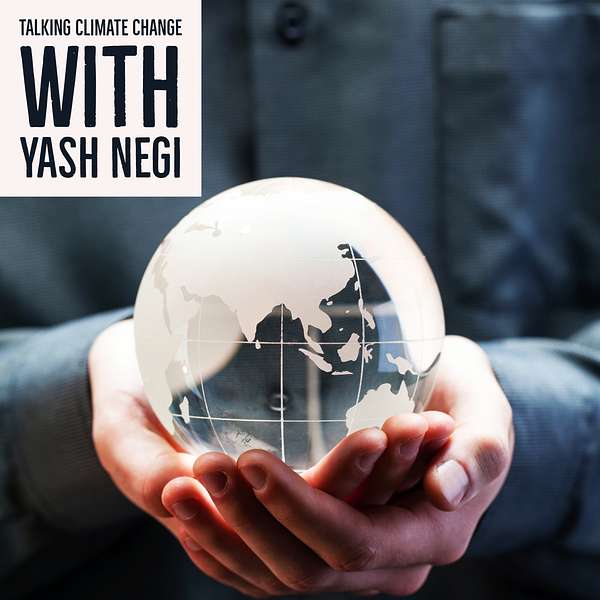
Talking Climate Change with Yash Negi
My name is Yash Negi, I am a CSE student. I am studying on climate change from 2018 and I have decided to come with my own podcast channel on climate change which is "Talking Climate Change with Yash Negi." This podcast is very different from the other podcast as you will hear only me telling you about each and every single topic associated with climate change. You can follow me on Twitter for daily climate change news, and you can give me suggestions to improve my podcast on the email ID given below. Along with the podcast I do have my website in which I post my blogs on climate change and technology.Twitter: https://twitter.com/realyashnegiEmail: yashnegi492@gmail.com
Talking Climate Change with Yash Negi
Episode 30: Climate System
In this episode of the podcast, I have talked about “Earth’s Climate System.”
Topics Covered:
- Climate System
- Weather and Climate
- Earth’s Climate History
- Components and their interactions
- How humans are changing the climate
- Inertia
- The sun and the global energy balance
- Global and hemispheric variability
- Extreme Events
- Global Air Circulation
- Non Rotating Earth
- Rotating Earth
- Hadley Cell
- Ferrel Cell
- Polar Cell
- Climate Regions
- Records of Climate Change
- Long term and Short Term
- Cycles in the Climate System
Additional Info:
Paleoclimatology:
Paleoclimatology is the study of past climate over a great period of the Earth's history. It uses evidence from ice sheets, tree rings, sediments, coral, and rocks to determine the past state of the climate. It demonstrates periods of stability and periods of change and can indicate whether changes follow patterns such as regular cycles.
Climate Models:
Climate models use quantitative methods to simulate the interactions of the atmosphere, oceans, land surface and ice. They are used for a variety of purposes; from the study of the dynamics of the weather and climate system, to projections of future climate. All climate models balance, or very nearly balance, incoming energy as short wave (including visible) electromagnetic radiation to the earth with outgoing energy as long wave (infrared) electromagnetic radiation from the earth. Any imbalance results in a change in the average temperature of the earth. The most talked-about applications of these models in recent years have been their use to infer the consequences of increasing greenhouse gases in the atmosphere, primarily carbon dioxide. These models predict an upward trend in the global mean surface temperature, with the most rapid increase in temperature being projected for the higher latitudes of the Northern Hemisphere.
Models can range from relatively simple to quite complex:
- Simple radiant heat transfer model that treats the earth as a single point and averages outgoing energy
- this can be expanded vertically (radiative-convective models), or horizontally
- finally, (coupled) atmosphere–ocean–sea ice global climate models discretise and solve the full equations for mass and energy transfer and radiant exchange.
Follow me on Twitter for daily climate change news and feel free to email me regarding suggestions to improve and how do you feel listening to my podcast. I would like to say to you all that please leave some feedback in whatever platform you are listening to this podcast, it will help me to see if you are liking it or not.
Twitter: https://twitter.com/realyashnegi
Email: yashnegi@climatology.in
Song: Ikson - New Day (Vlog No Copyright Music)
Music provided by Vlog No Copyright Music.
Video Link: https://youtu.be/cVA-9JHwbFY